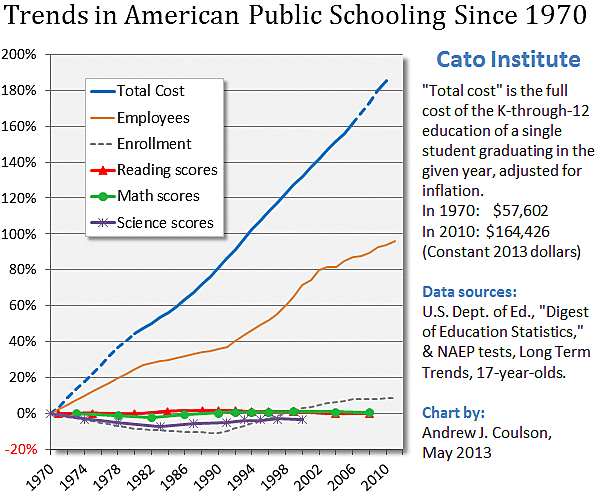A few days ago, the Washington Post’s Perry Stein revealed a move by D.C. Council Chairman Phil Mendelson to increase the amount of money going to at-risk students as part of Mayor Muriel Bowser’s proposed fiscal year 2023 budget. Here’s the background:
The reporter states that at-risk students are “those who are homeless or in foster care, whose families qualify for food stamps, and students who are in high school and have been held back at least one year,” and they “account for about 47 percent of the city’s more than 95,000 public school children.” Ms. Stein adds that “The funding in the regular education budget for at-risk students amounts to an extra $3,000 each and is intended to alleviate the effects of poverty, which can make learning more challenging. The money could be used to pay for extra reading specialists, music teachers, or extended day programs.”
There have been calls by others, such as the organization DC Students Succeed, to increase the weight in revenue that schools receive for instructing at-risk students through the Uniform Per Student Funding Formula. It is the UPSFF that provides the extra $3,000 per pupil that Ms. Stein references. Mr. Mendelson took a different strategy. Again from the Washington Post article on this issue:
“The funding proposal — which the council must approve a second time as part of the city’s overall budget process — would spread an additional $41.6 million over four years across nearly 170 traditional public and charter schools. Unlike most targeted education funds, the money would bypass the school system’s central office and go directly to principals, giving them control over how to spend money on staff and services that could improve student outcomes.”
Ms. Stein explains how it would work:
“Mendelson’s proposal would give extra funding to schools that have a population of at-risk students that exceeds 40 percent. Schools that have populations of at-risk students that exceed 70 percent would receive even more. For example, Savoy Elementary has 265 students. Of those, 225 — or nearly 85 percent — are considered at risk.
In all, the school would receive more than $98,000 under the proposal. That’s on top of the approximately $3,000 each of the 225 at-risk student is allocated through the typical budget process.”
Mr. Mendelson is trying to address an issue that has plagued the traditional public school system. According to Ms. Stein:
“But numerous investigations and reports have determined that the city often spends this money incorrectly, using it to pay for routine costs instead of on programs to supplement basic school offerings. In some instances, that’s because many schools with high concentrations of at-risk students are under-enrolled and smaller schools are more expensive to operate. These schools’ budgets don’t stretch as far as the budgets for larger schools, so principals end up spending the money on basic staffing that other schools can cover with their baseline budgets.”
Here’s the problem. The 1995 D.C. School Reform Act that created charter schools in the District mandates that funding for all public school students go through the UPSFF. Here’s a summary of the law included in the Adequacy Study completed in 2013:
“The requirement that education for all students be funded on a uniform per-student basis, with the dollars following students into and out of whatever school they attend, was enacted into DC law in 1995. The UPSFF was established to carry out the mandate. The formula calculates funding based on students and their characteristics, not on school or local educational agency (LEA) differences. This uniformity requirement applies only to local funding, not to federal or private funding. It affects only DCPS and public charter school operating budgets, not capital budgets and investments. The UPSFF is intended to fund all traditional school-level and system level operations for which DCPS and public charter schools are responsible, including instructional, non instructional (facilities maintenance and operations), and administrative operations.”
Ms. Perry states in her article that Chairman Mendelson referred to his at-risk student funding proposal “the ‘single most important’ new idea in the fiscal year 2023 budget.” The only problem, however, is that the move is illegal in that it directly contradicts the language contained in the School Reform Act.
But breaking the law is obviously not important to the DC Charter School Alliance as long as it involves more money to its schools. The organization tweeted “Thank you @ChmnMendelson & @councilofdc for supporting students with an increase in funding for education! . . .Creating two new concentration weights to support schools serving higher populations of students designated at-risk”
I noticed that the Council also appropriated $300,000 to perform a new Adequacy Study, which is something I called for the other day. Perhaps this new report will call out the serious error Mr. Mendelson made in his effort to help at-risk students.

You must be logged in to post a comment.